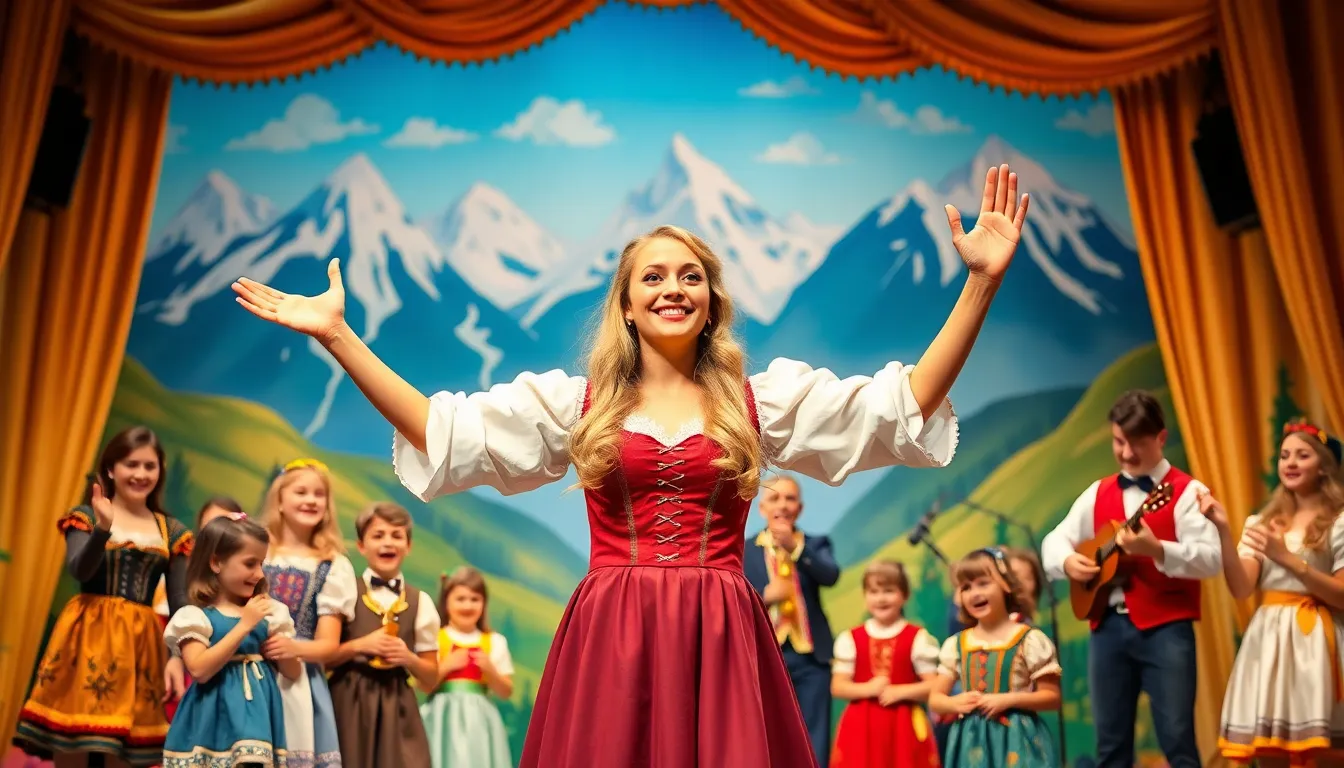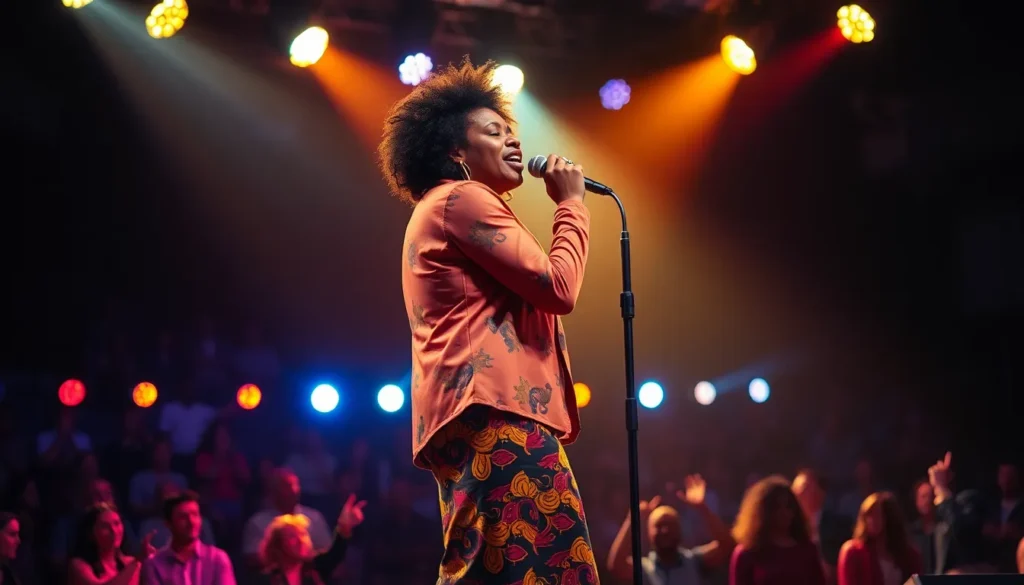Table of Contents
ToggleR&B vocals have a unique ability to evoke deep emotions and create unforgettable experiences. This genre blends soulful melodies with rich harmonies, allowing artists to express their feelings in ways that resonate with listeners. From the smooth sounds of classic legends to the innovative styles of contemporary stars, R&B continues to evolve while staying true to its roots.
The power of R&B lies not just in its catchy hooks but in the vocal techniques that bring songs to life. Techniques like melisma, falsetto, and emotional delivery set R&B singers apart, making their performances captivating and memorable. As the genre grows, it influences various musical landscapes, proving that R&B vocals remain a vital force in the world of music.
Overview of R&B Vocals
R&B vocals showcase a blend of emotional expression and technical prowess. These vocals often feature rich, soulful melodies that resonate with listeners. Characteristic vocal techniques include:
- Melisma: R&B artists utilize melisma to elongate syllables, adding depth and emotional weight to their performances. This technique contributes to the genre’s distinct sound.
- Falsetto: Singers employ falsetto to reach higher notes, creating a haunting, ethereal quality. This vocal style enhances the emotional landscape of the music.
R&B has evolved significantly since its inception, influencing various genres. The style incorporates elements from gospel, blues, and jazz, broadening its appeal. Notable artists such as Aretha Franklin, Marvin Gaye, and Beyoncé have left a lasting impact, shaping contemporary music with their unique vocal styles.
R&B’s role in the music landscape cannot be understated. It serves as a foundation for genres like hip-hop and soul, showcasing the power of voice in connecting with audiences. The genre continues to thrive, with modern artists incorporating innovative techniques while honoring its rich heritage.
Characteristics of R&B Vocals

R&B vocals are renowned for their emotional resonance and expressive qualities. Artists convey profound feelings through their singing styles, creating a strong connection with audiences.
Importance of Emotion and Expression
Emotion profoundly influences R&B vocals. Singers often draw from personal experiences, allowing listeners to relate to their narratives. Expressive delivery showcases feelings of love, pain, and longing. This emphasis on emotional authenticity engages audiences and enhances the listening experience.
Vocal Techniques in R&B
Vocal techniques play a critical role in defining R&B. Key techniques include:
- Melisma: Singers elongate syllables to add emotional depth, showcasing their vocal range. This technique adds a rich texture to melodies.
- Falsetto: Artists utilize falsetto to reach higher notes with a light and airy quality, enhancing the haunting beauty of their performances.
- Vibrato: R&B singers often incorporate vibrato, creating a warm, resonant sound that emphasizes emotion and adds a unique flair.
- Runs and Scales: Quick, intricate runs and scales demonstrate technical skill, allowing artists to infuse their personality into songs.
These techniques combine to create a distinct and impactful vocal style that characterizes R&B music.
Evolution of R&B Vocals
R&B vocals have undergone significant transformation since the genre’s inception, reflecting changes in culture and musical trends. This evolution captures the incorporation of various influences and the emergence of pivotal artists who shaped the sound.
Historical Roots and Influences
R&B traces its roots to the 1940s, merging elements of gospel, blues, and jazz. Gospel music provided emotive singing styles, while the blues contributed gritty expressiveness. Jazz introduced complex chord structures and improvisation, enriching the vocal delivery. Over time, R&B evolved into a vehicle for emotional storytelling, driven by personal experiences and societal themes. The genre embraced innovations like rhythm and blues, securing a place in popular music history.
Key Artists and Their Contributions
Numerous artists have significantly shaped R&B vocals, each leaving a lasting impact:
- Aretha Franklin: Known as the Queen of Soul, Franklin’s powerful belting and dynamic phrasing set new standards for emotional expression in R&B.
- Marvin Gaye: His smooth falsetto and poignant lyrics redefined romantic themes in R&B, influencing countless singers.
- Beyoncé: A modern icon, Beyoncé blends traditional R&B techniques with contemporary elements, showcasing versatility in vocal performance and production.
These artists exemplify how R&B vocals evolved and adapted, shaping the genre’s identity and inspiring future musicians.
Contemporary R&B Vocals
Contemporary R&B vocals showcase a blend of traditional techniques with modern influences, creating a unique auditory experience. The genre continuously evolves, reflecting current cultural trends and innovations in sound.
Current Trends and Styles
Current trends in contemporary R&B vocals include the fusion of genres and the innovative use of technology. Artists often incorporate elements from hip-hop, electronic music, and pop, broadening R&B’s appeal. Vocal production techniques, such as autotune and layering, enhance vocal clarity and emotional impact. Many singers utilize melodic hooks and catchy choruses, focusing on infectious rhythms that resonate with listeners. Collaborations between R&B artists and musicians from various genres also highlight the genre’s versatility and expansion into new auditory territories.
Notable Modern R&B Vocalists
Notable modern R&B vocalists continue to push the boundaries of the genre.
- SZA: Known for her emotive delivery and genre-blending sound, SZA explores themes of love and self-discovery, making her relatable to a contemporary audience.
- H.E.R.: Her powerful and soulful voice captures deep emotions, often addressing personal experiences through her music and lyrics.
- Khalid: Blending R&B with pop influences, Khalid’s distinct vocal tone and storytelling resonate with younger listeners.
- Frank Ocean: Renowned for his unique vocal style and introspective lyrics, Frank Ocean stands out for his innovative approach to composition and production.
- Ari Lennox: Drawing inspiration from classic soul, Ari Lennox’s rich vocals and authentic expressions connect deeply with her audience.
These artists exemplify the evolution of R&B while maintaining the emotional depth and authenticity that define the genre.
R&B vocals continue to captivate audiences with their emotional depth and expressive qualities. The genre’s unique blend of traditional techniques and modern influences keeps it relevant in today’s music landscape. As artists explore new themes and sounds, they honor the rich history of R&B while pushing creative boundaries.
This evolution highlights the genre’s ability to resonate with listeners on a personal level, reflecting shared experiences and emotions. With each new generation of vocalists, R&B remains a powerful force in music, ensuring its legacy endures for years to come.







